Banana leaves are a staple in many tropical regions, known for their versatility and use in various cultural cuisines and rituals. However, in recent years, there has been an increasing concern among farmers and plant enthusiasts regarding the appearance of brown spots on banana leaves.
These unsightly marks, also known as leaf spots, have been causing significant damage to banana plants, leading to reduced yield and potentially threatening the livelihood of farmers. Here we will dive into everything you need to know about fixing banana leaves’ brown spots.
From there, we’ll provide you with essential steps to restore your banana plant’s health. This includes adjusting watering practices, ensuring proper nutrition, dealing with climate stress, and transplanting correctly.
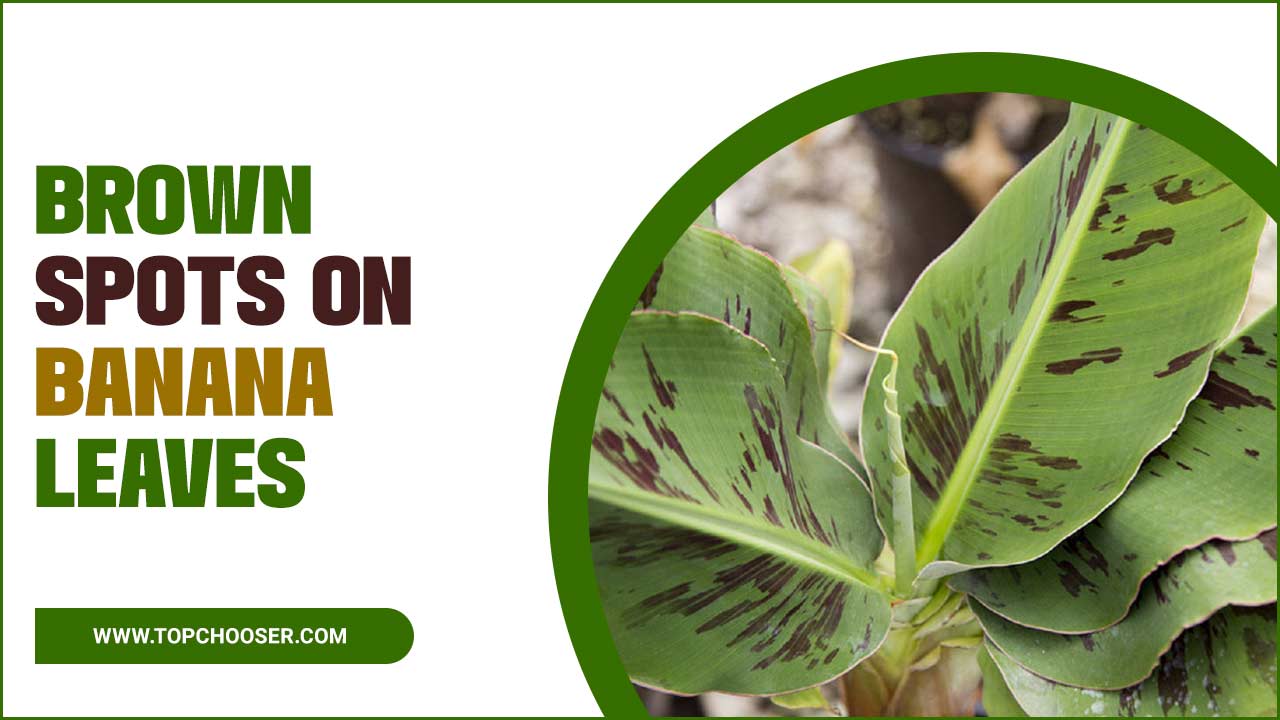
Causes Of Brown Spots
The appearance of brown spots on banana leaves can be attributed to a variety of causes. One of the primary reasons for the occurrence of these spots is fungal infections. Fungi, such as the well-known banana leaf spot fungus, Mycosphaerella fijiensis, can easily infect banana plants and lead to the development of brown flecks spots on the yellow leaves. This fungus thrives in warm and humid conditions, making banana plantations particularly susceptible to its spread.
- Fungal infections (e.g. Sigatoka fungus)
- Bacterial infections (e.g. bacterial leaf spot)
- Viral infections (e.g. Banana Bunchy Top Virus)
- Nutrient deficiencies (e.g. lack of potassium or magnesium)
- Environmental factors (e.g. excessive heat, cold, or humidity changes)
- Physical damage (e.g. cuts or bruises)
- Pests (e.g. mites or aphids)
- Disease transmission (e.g. infected tools or equipment)
Essential Steps To Fix Brown Spots On Banana Leaves
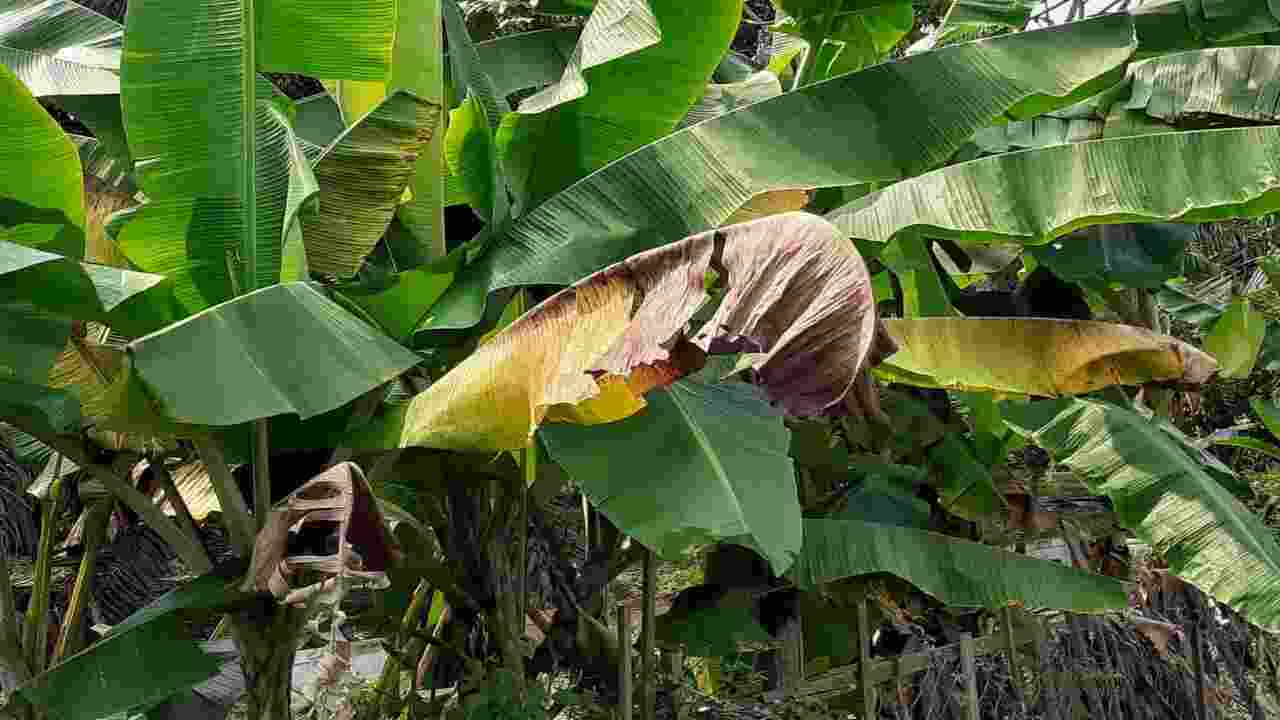
Brown spots on banana leaves can harm the entire plant. To prevent further damage and help your banana plant thrive, it’s important to address and resolve these spots. Environmental factors like sunburn or nutrient deficiencies can also cause brown spots.
By adjusting watering practices, providing proper nutrients, and using fungicides or insecticides, you can improve the health and appearance of your banana plants. These measures are crucial for maintaining the well-being and productivity of your banana plant.
Here are step-by-step guides to fix banana leaves’ brown spots. Banana plant owners should be aware of brown spots as they can indicate various issues with the plant’s health.
1.Adjusting Watering Practices
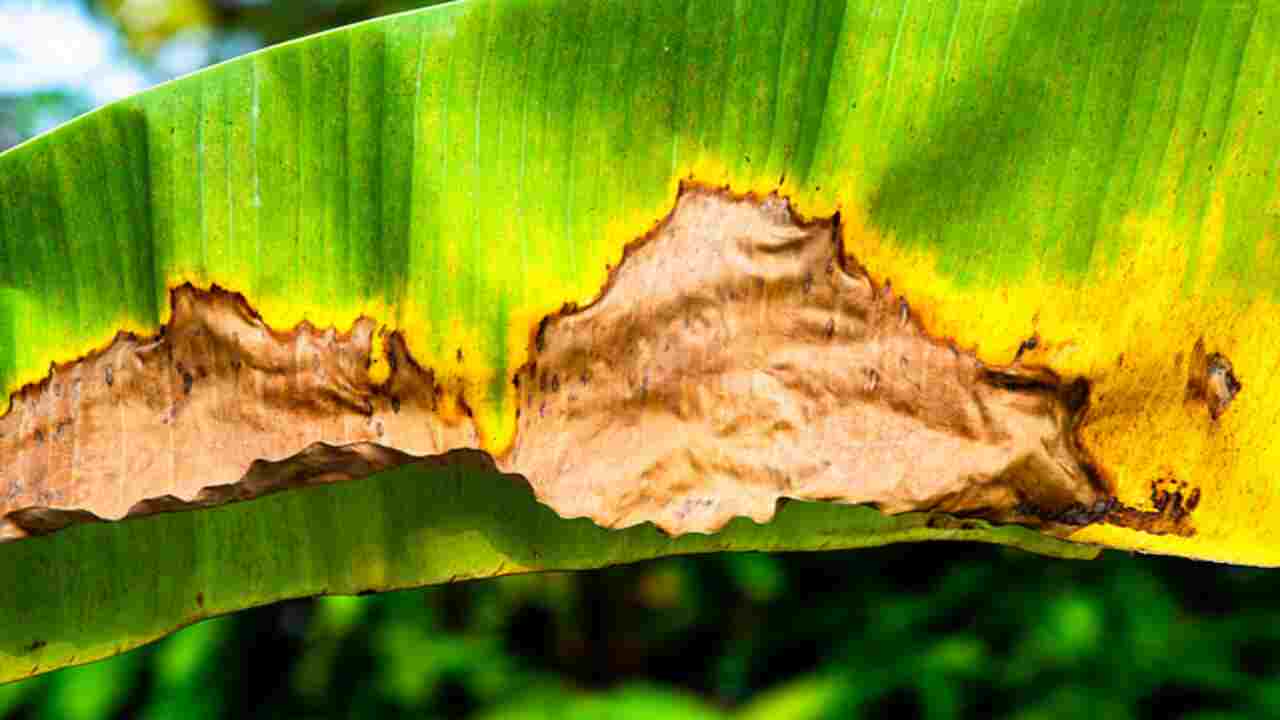
Adjusting watering practices is crucial for fixing banana leaves’ brown spots. Overwatering or underwatering can cause these unsightly spots to appear. To address brown spots caused by overwatering, it is important to allow the soil to dry out before watering again.
Additionally, ensure the banana plant is not sitting in water, which can lead to root rot and fungal diseases. On the other hand, if underwatering is the culprit behind brown spots, increasing the watering frequency and ensuring the plant receives enough water will help. Striking a balance with watering is essential to prevent both overwatering and underwatering. Good drainage is also vital for healthy banana plants to avoid waterlogged soil.
2.Importance Of Proper Nutrition

Proper nutrition plays a vital role in maintaining the health of banana plants and preventing brown spots on their leaves. These brown spots can often be an indication of nutrient deficiencies or diseases. Conducting a soil test is essential to identify any deficiencies present in the soil.
Once determined, appropriate nutrients such as potassium, nitrogen, and magnesium can be provided through fertilization. However, it is important to avoid over-fertilization as it can lead to salt build-up in the soil and further damage the plant.
Achieving a balance between proper watering and drainage is crucial to prevent waterlogged or dry conditions from contributing to leaf issues. By ensuring the right nutrients and optimal growing conditions, you can maintain healthy banana plants and minimize the occurrence of brown spots.
3.Dealing With Climate Stress
Banana leaves’ brown spots can indicate climate stress, such as extreme heat or cold. It is important to identify the underlying cause before taking action. If the brown spots are due to temperature extremes, providing shade or insulation can help protect the leaves.
Proper watering is also crucial for healthy banana plants, as overwatering or underwatering can contribute to brown spots. Regular fertilization with a balanced fertilizer can prevent nutrient deficiencies that may lead to brown spots. Additionally, pruning damaged or diseased leaves and maintaining good overall plant health will promote new growth and minimize the appearance of brown spots.
4.Transplanting Banana Plants Correctly
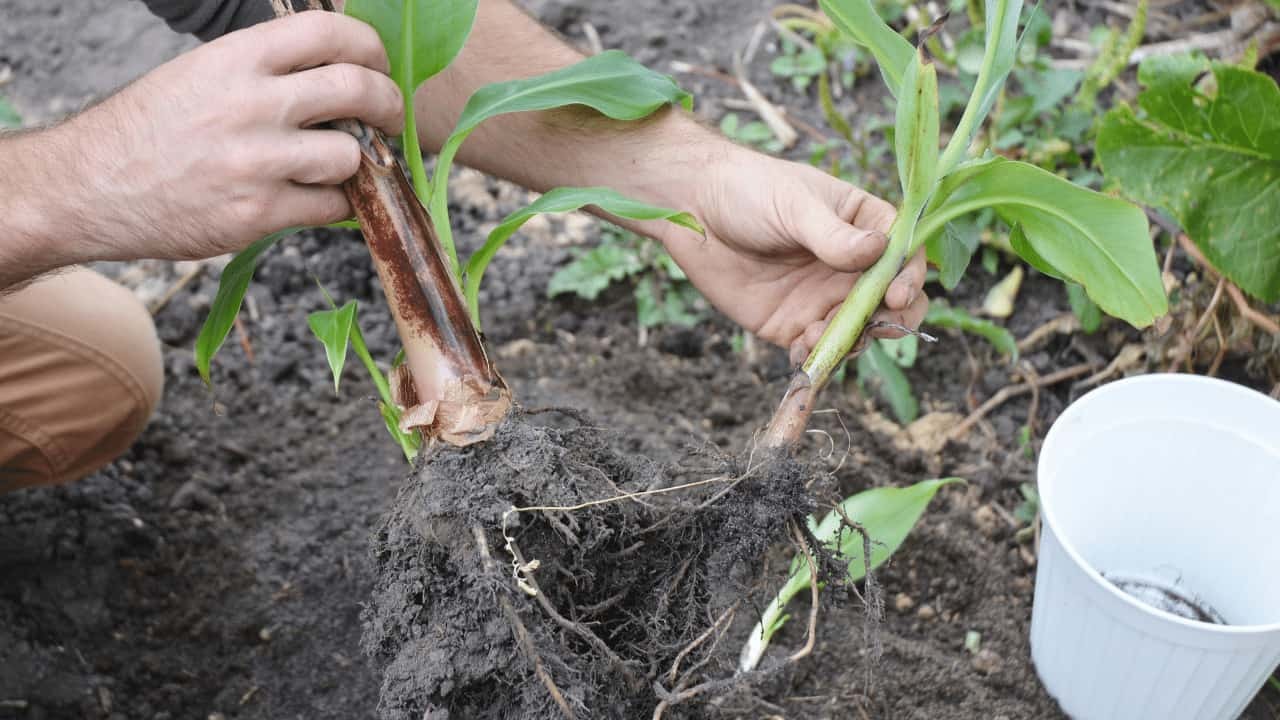
Transplanting banana plants correctly is crucial in preventing brown spots on the leaves. Various factors, including nutrient deficiencies, fungal infections, or physical damage, can cause banana leaves to brown spots. When transplanting, choose a location with well-draining soil and adequate drainage sunlight.
Dig a hole slightly larger than the root ball of the plant and place the plant in the hole, ensuring that the top of the root ball is level with or slightly above the soil surface. Backfill the hole with soil, gently firming it around the roots to eliminate air pockets.
Water the plant thoroughly after transplanting and continue regularly watering as needed. Proper transplantation techniques help maintain the health and vitality of the banana plant, reducing the risk of brown spots on the leaves.
5.Avoiding Transplant Shock
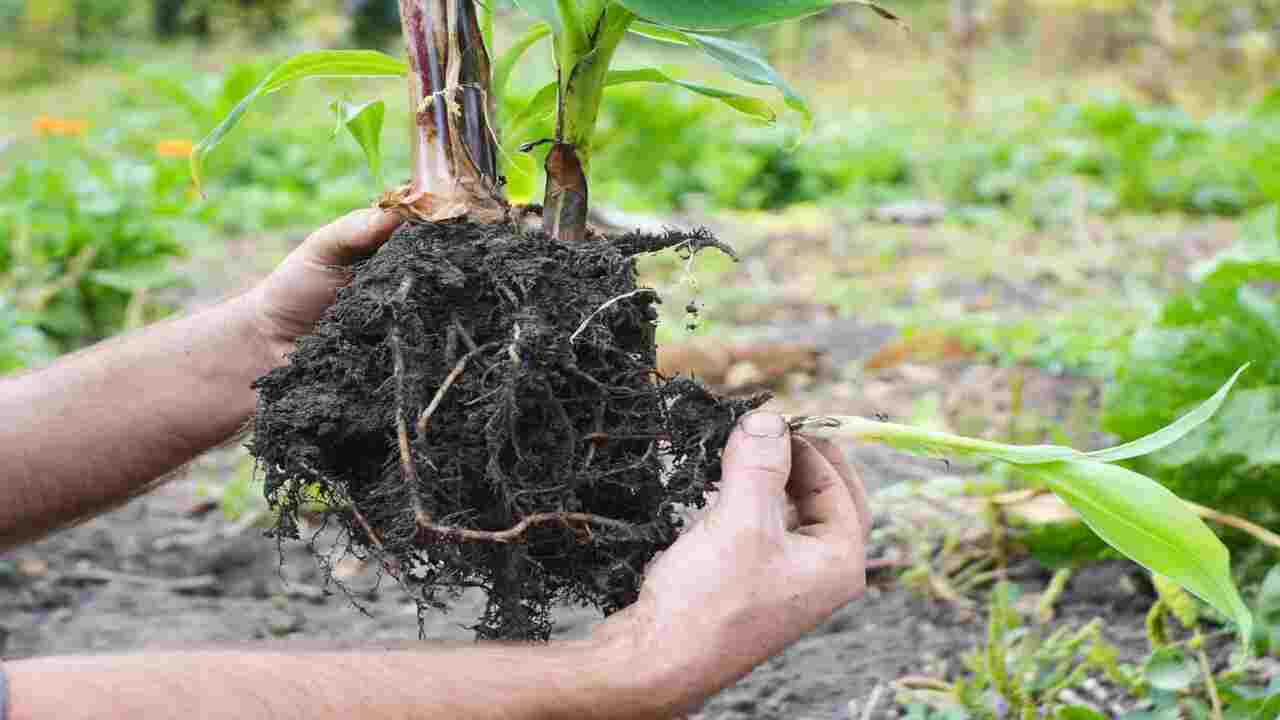
To prevent banana leaves’ brown spots, it’s crucial to avoid transplant shock. Transplant shock can occur when a banana plant is moved or replanted, leading to stress and brown spots on the leaves. To minimize this, preparation is key.
Ensure the new planting site or pot has well-draining soil and the right balance of nutrients. Provide adequate water and sunlight for the plant’s growth. Handle the banana plant carefully During the transplanting process to avoid damage to the roots and leaves. Keep a close eye on the plant after transplanting, watching for signs of stress or brown spots. Adjust watering and consider using fungicides if needed.
6.Lack Of Nutrients
To fix brown spots, identify the specific nutrient deficiency, commonly nitrogen, potassium, or magnesium. Provide the plant with these nutrients through regular fertilization and amending the soil with organic matter. Proper watering is also important.
Overall, a comprehensive approach is necessary to address brown spots. Air circulation plays a crucial role in preventing the occurrence of brown spots. Additional banana plants can help address the issue of brown spots. Banana fingers are elongated and curved in shape, resembling the fingers of a hand.
Signs Of Underwatering Your Banana Plant
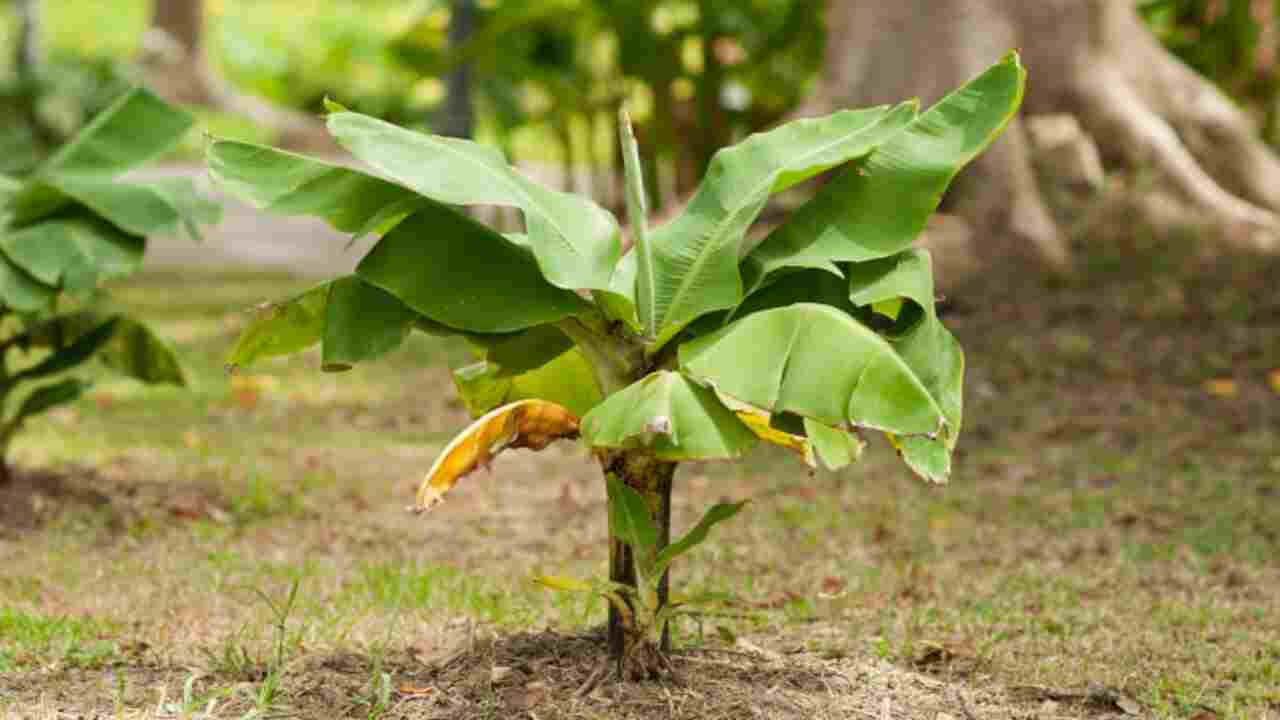
Signs of underwatering your banana plant can manifest in various ways. One common sign is the presence of brown spots on the leaves, signalling that the plant is not receiving enough water. Wilting and drooping leaves are also clear indicators of insufficient watering.
To rectify this issue, it is crucial to water the plant and ensure proper drainage thoroughly. Monitoring the Moist soil moisture levels regularly and adjusting the watering schedule accordingly is essential. Signs of underwatering your banana plant:
- Yellowing or browning of leaves
- Leaves becoming dry and brittle
- Slow growth or stunted appearance
- Wilting of leaves, especially during hot weather
- Soil feeling dry to the touch
- Reduced fruit production or small, underdeveloped fruits
Should You Cut Dead Leaves Off of Banana Plants?
The presence of infected leaves on banana plants is often a sign of leaf spot disease, which various factors, including poor drainage and excessive moisture, can cause. Infected leaves may develop dark brown spots, compromising the overall health of the plant.
It is important to regularly inspect and remove any infected fruit and affected banana plant leaves to prevent the spread of disease to other plants in the vicinity. Additionally, the removal of banana suckers, especially from Cavendish banana varieties, can help control the outbreak of banana freckles, a fungal disease that manifests as individual spots on the leaves.
It is also crucial to ensure that irrigation water is not contaminated, as it can contribute to the spread of diseases. Therefore, proper care and maintenance, including timely removal of infected leaves and fruits, are essential for maintaining the health and productivity of banana plants.
How To Keep Banana Leaves Healthy Post-Treatment?
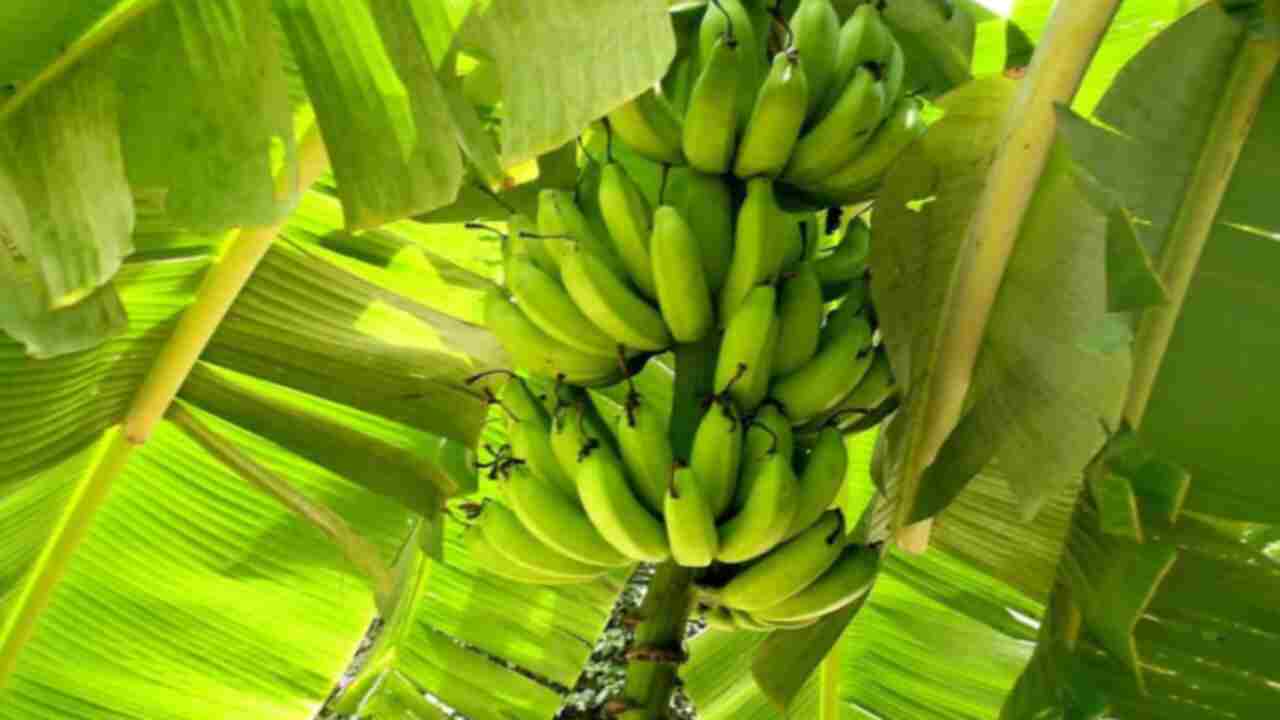
Proper care is essential to maintain the health of banana leaves after treatment. Regular watering is necessary, but avoiding overwatering is important, as excessive moisture can lead to root rot and other issues. Protecting the leaves from extreme temperatures, pests, and diseases is also crucial. The leaf spot symptoms on banana leaves appear as brown spots or lesions.
It’s important to monitor the plant for any signs of infestation or disease and take prompt action if necessary. Additionally, it’s important to avoid over-fertilization, as this can cause leaf burn and further damage. Following these care guidelines will help ensure your banana leaves remain healthy and vibrant.
When Should You Consider Professional Help For Your Banana Plant?

Taking care of a banana plant can be a rewarding experience, but there may be times when seeking professional help becomes necessary. Here are some situations in which you should consider reaching out to a professional for assistance with your banana plant:
- Pest Infestation: If you notice an unusual amount of pests on your banana plant, such as aphids, spider mites, or mealybugs, it may be necessary to consult a professional.
- Disease Symptoms: Certain diseases, such as Panama disease or black sigatoka, can significantly impact the health of your banana plant.
- Nutrient Deficiencies: If your banana plant is displaying signs of nutrient deficiencies, such as yellowing leaves, stunted growth, or poor fruit quality, a professional can assess the soil and recommend appropriate fertilizers or amendments to restore optimal nutrient levels.
- Environmental Conditions Stress: Extreme weather conditions, such as excessive heat or cold, can negatively affect the growth and development of banana plants.
Seeking professional help can save you time and effort and potentially save your banana plant from further damage. The lack of water is causing brown spots to appear on the banana leaves. The climatic conditions play a crucial role in the development of brown spots.
Conclusion
Taking care of your banana plants is crucial to ensure healthy growth and prevent issues like brown spots on the leaves. By adjusting watering practices, providing proper nutrition, and addressing climate stress, you can fix brown spots and promote the overall health of your banana leaves.
Additionally, transplanting correctly and avoiding transplant shock are important steps in maintaining healthy banana plants. Prevention is key, so it’s important to understand the causes of brown spots and how overwatering or underwatering can affect your Brown Spots On Banana Leaves.
If you’re unsure about the best course of action for your banana plant, it’s always a good idea to seek professional help. Hope the above information on fixing brown spots on banana variety leaves will help you to keep your banana leaves healthy and vibrant by following these expert tips.
Frequently Asked Questions
[rank_math_rich_snippet id=”s-1241762f-b702-4e73-98c4-391fd7c431b7″]

I am passionate about home engineering. I specialize in designing, installing, and maintaining heating, ventilation, and air conditioning systems. My goal is to help people stay comfortable in their homes all year long.
